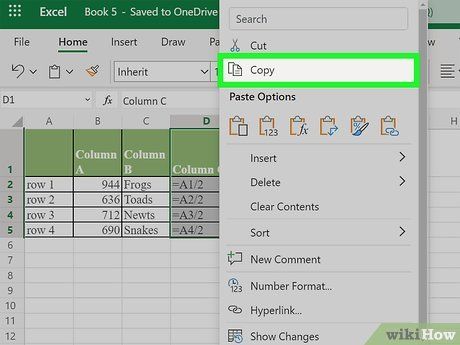3 Simple Steps to Copy Excel Formulas

Copying Excel formulas can save you time and reduce errors in your spreadsheet work. Whether you are a beginner or an advanced user, understanding the correct techniques to copy formulas efficiently can streamline your data processing tasks. In this guide, we will explore three simple methods to copy formulas in Microsoft Excel with clear, step-by-step instructions.
Why Copy Formulas?

Before diving into the steps, let’s consider why copying formulas is important:
- Efficiency: Instead of entering the same formula repeatedly, copying ensures you avoid redundancy.
- Consistency: Copying formulas helps maintain uniform calculations throughout your spreadsheet, which is vital for accurate results.
- Error Reduction: By duplicating a known formula, you minimize the chance of introducing errors in your data analysis.
1. Using the Fill Handle

The Fill Handle is one of Excel’s most user-friendly tools for copying formulas. Here’s how to use it:
- Select the cell containing the formula you want to copy.
- Position your cursor on the bottom-right corner of the cell until it turns into a cross.
- Click and drag this cross over the cells where you want to replicate the formula.
As you drag, Excel automatically adjusts cell references in the formula relative to their new positions.
📌 Note: If you want the formula to remain exactly the same without relative changes, use Ctrl (or Cmd on Mac) while dragging.
2. Using Paste Special for Advanced Copying

While the Fill Handle works well for adjacent cells, Paste Special offers more control for specific copying needs:
- Copy the formula using Ctrl + C or right-click and select 'Copy'.
- Select the cells where you want to paste the formula.
- Right-click and choose 'Paste Special'. A dialog box will appear.
- Under 'Paste', select 'Formulas' to paste only the formula, excluding formatting.
| Option | Description |
|---|---|
| Formulas | Paste only the formulas |
| Formulas and Number Formats | Paste the formulas and their original number formatting |
| Values and Number Formats | Paste the calculated results with original number formatting |

📌 Note: 'Paste Special' gives you options to choose what to paste, enabling you to customize the copying process.
3. Using Absolute References for Fixed Formulas

If your spreadsheet requires formulas that do not change when copied, you’ll need to use absolute references:
- Locate the formula you want to copy.
- Identify which cell references should stay fixed.
- Add a dollar sign ($) before the column letter and row number of these cells (e.g., $A$1 instead of A1).
- Copy and paste the formula using one of the previous methods.
Here's an example:
=A1 * $B$1When this formula is copied, the B1 cell reference will always point to the same cell, regardless of where you copy the formula to.
📌 Note: Absolute references ($ signs) keep cell references fixed when formulas are copied. Use these for fixed values like tax rates or constants.
In conclusion, mastering these three methods for copying formulas in Excel can significantly boost your productivity. Whether you're using the straightforward Fill Handle, the versatile Paste Special, or leveraging absolute references for precise control, these techniques help maintain consistency and accuracy in your work. Each approach has its unique advantages, making your Excel experience smoother and more efficient. As you become more familiar with these methods, you'll find that copying formulas can become an almost effortless part of your data management routine, freeing you to focus on analysis and insights.
What happens if I accidentally drag the Fill Handle too far?

+
If you drag the Fill Handle too far, Excel will continue to auto-fill the cells with what it thinks is the pattern in your data. You can always undo this action with Ctrl + Z and correct your selection.
Can I copy formulas between different Excel workbooks?

+
Yes, you can. Simply copy the formula, switch to the other workbook, select the target cells, and use the same pasting techniques.
Why do I see #REF! errors after copying formulas?

+
If your formula references cells outside of the current range or deleted cells, you might encounter #REF! errors. Double-check your formula references and adjust as needed.
Can I change cell references in copied formulas?

+
Yes, after pasting formulas, you can manually adjust cell references or use the ‘Find and Replace’ tool to change references systematically.